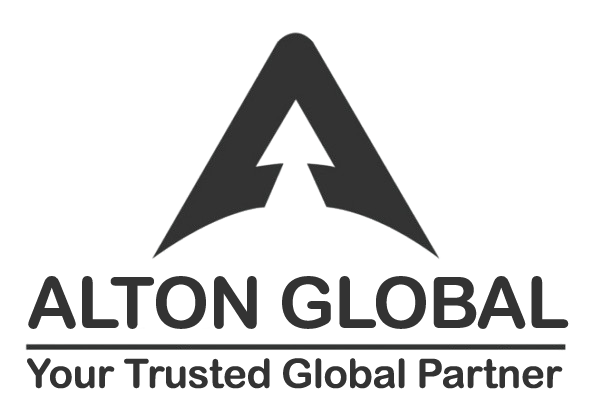The Impact of Trump’s Tariffs on Global Iron Trading
In early 2025, the administration of U.S. President Donald Trump implemented a series of tariffs targeting imports, including a significant 25% duty on steel and aluminum, alongside broader trade measures aimed at addressing trade deficits and protecting domestic industries. These policies, rooted in a protectionist “America First” agenda, have sent ripples through global markets, with profound implications for iron trading—a critical component of the steel supply chain. This article explores the multifaceted effects of these tariffs on global iron trading, examining their impact on prices, trade flows, and economic dynamics.
A New Era of Protectionism
Trump’s tariffs, which include a reinstated 25% Section 232 tariff on steel imports effective March 4, 2025, aim to bolster U.S. industries by curbing foreign competition. Iron ore, the primary raw material for steel production, is indirectly affected as steelmakers adjust to higher costs and shifting supply chains. The tariffs also encompass broader measures, such as a 10% baseline tariff on nearly all imports and reciprocal tariffs targeting countries with significant trade surpluses, complicating global trade dynamics.
The rationale behind these tariffs is to reduce the U.S. trade deficit—reported at over $1.2 trillion in 2024—and to incentivize domestic production. However, the interconnected nature of global iron and steel markets means that these policies have far-reaching consequences beyond U.S. borders.
Price Volatility in Iron Markets
One immediate effect of the tariffs has been increased volatility in iron ore prices. Posts on X noted that iron ore futures fell to approximately CNY 721 per tonne in early April 2025, the lowest since September 2024, driven by fears of a trade war and global recession. This decline reflects uncertainty in demand, particularly from China, the world’s largest iron ore consumer, which imposed retaliatory tariffs of 34% on U.S. goods starting April 10, 2025.
The tariffs on steel imports raise production costs for U.S. manufacturers, as imported steel becomes more expensive. This, in turn, reduces demand for iron ore if U.S. steel output declines due to higher domestic prices. Conversely, U.S. steel producers may benefit from reduced competition, potentially increasing domestic steel production and iron ore demand in the short term. However, analysts suggest that higher steel prices could dampen demand from downstream industries like construction and automotive, creating a complex feedback loop.
Globally, iron ore exporters such as Australia and Brazil face challenges as trade barriers disrupt traditional markets. If U.S. steel production slows, these countries may redirect supplies to other markets, potentially oversupplying regions like Europe or Asia and further depressing prices. The uncertainty surrounding green steel production—already a focus of global decarbonization efforts—adds another layer of complexity, as tariffs may hinder investments in low-carbon technologies.
Shifting Trade Flows
The tariffs have prompted significant shifts in global iron trading patterns. Canada, a major steel supplier to the U.S., faces the 25% steel tariff, which could reduce its exports and force Canadian producers to seek alternative markets. This redirection may increase competition in regions not subject to U.S. tariffs, affecting iron ore demand in those areas. Similarly, Asian exporters like South Korea and Japan, also hit by the steel tariffs, are reevaluating their trade strategies.
China’s response—escalating tariffs on U.S. goods to 84% and potentially higher—has further complicated trade flows. As U.S.-China trade tensions intensify, China may source more iron ore from non-U.S. suppliers, reinforcing its reliance on Australia and Brazil. However, if global steel demand weakens due to trade disruptions, even these suppliers could face reduced orders.
The European Union, facing a 20% tariff on its exports to the U.S., has announced retaliatory measures targeting $4.9 billion in U.S. goods starting April 1, 2025, with an additional $19 billion planned for mid-April. These measures could disrupt transatlantic iron and steel trade, as European steelmakers adjust to higher costs and seek new markets, potentially flooding other regions with supply.
Economic and Geopolitical Ramifications
The tariffs’ broader economic impact cannot be overstated. Economists warn that higher tariffs risk reigniting inflation and raising costs for consumers, with U.S. households potentially facing an additional $1,300 in expenses in 2025. For iron trading, this translates to higher steel prices affecting industries reliant on iron-based products, from infrastructure to manufacturing.
Geopolitically, the tariffs strain alliances. Canada’s Prime Minister Mark Carney called the U.S. measures “an attack on Canadian workers,” while the EU’s Ursula von der Leyen labeled them a “major blow to the world economy.” These tensions could lead to fragmented trade blocs, with countries forming new partnerships to bypass U.S. tariffs, potentially sidelining traditional iron trade routes.
Moreover, the tariffs highlight a paradox for U.S. policy. While intended to protect domestic industries, they may incentivize offshoring of manufacturing to countries with lower raw material costs, such as Mexico, which benefits from exemptions under the USMCA. This could reduce U.S. demand for domestically sourced iron ore in the long term.
The Path Forward
The effects of Trump’s tariffs on global iron trading are still unfolding, with outcomes hinging on how nations respond. Negotiations, such as those pursued by the UK and India to secure trade deals with the U.S., may mitigate some impacts, but a full-scale trade war remains a risk.
For iron ore markets, the immediate future is one of uncertainty. Prices may stabilize if global demand holds, but prolonged trade disruptions could lead to oversupply and further price declines. Exporters must navigate a shifting landscape, balancing U.S. market access with opportunities elsewhere. Meanwhile, the push for green iron and steel production faces hurdles, as tariffs divert resources from innovation to cost management.
In conclusion, Trump’s tariffs have upended global iron trading by altering prices, rerouting supply chains, and straining international relations. While they may bolster U.S. steelmakers in the short term, the long-term consequences—higher costs, disrupted trade, and potential economic slowdown—pose challenges for the global iron market. As countries adapt to this new trade reality, the iron industry must brace for a period of volatility and transformation.





No comment